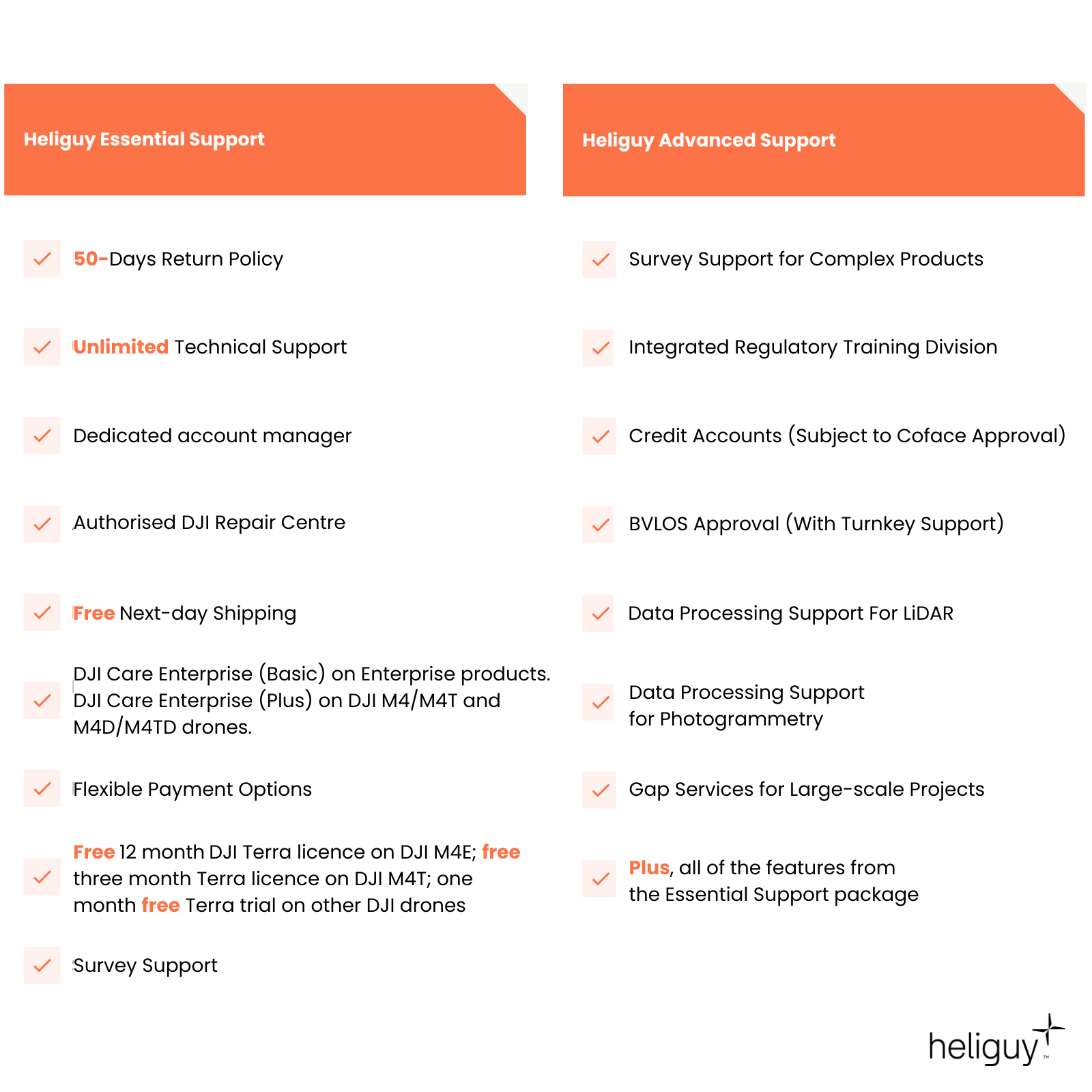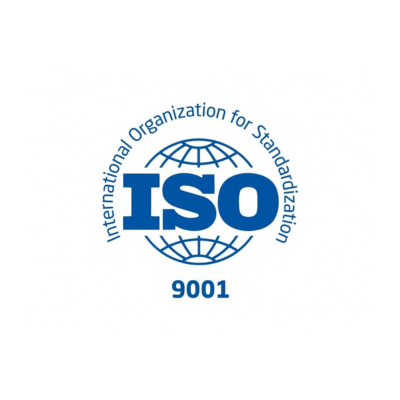DJI Agras Drone Spraying Course
Price on Request
50-days return policy
This DJI Agras course covers drone spraying technology and sets the foundations for future developments in the sector.
Learning Outcomes This multi-day training course helps pilots achieve the UK CAA-approved GVC (General Visual Line of Sight Certificate) and to competently operate DJI Agras aircraft.
Course Delivery The course is delivered on location at a farm in Northumberland, delivered in partnership between enterprise UAS specialist heliguy™ and agricultural experts Drone Ag.
UK SORA Consultancy heliguy™ has an in-house consultancy service to help prepare UK SORA (formerly OSC) applications for DJI Agras operations.
Overview
Specifications
Support
FAQ
Heliguy Services
Drone Spraying Course: Learning Outcomes
Efficient and effective DJI Agras operations
The course covers a breadth of modules to ensure you can operate DJI Agras safely, effectively, and legally.
DJI Agras is an automated drone series for targeted spraying - useful for precision agriculture and increasing efficiency.
The syllabus includes:
GVC drone training, including flight safety, UK laws/regulations, and practical flying and theory.
Chemical mixing and handling, including licensing, techniques, and disposal.
Agras kit review, including spray tank and spreading module;.
Manual practice flight with DJI Agras drone;.
DJI Agras specific functions and applications, including varied and uneven terrain;.
Setting up the D-RTK 2 base station.
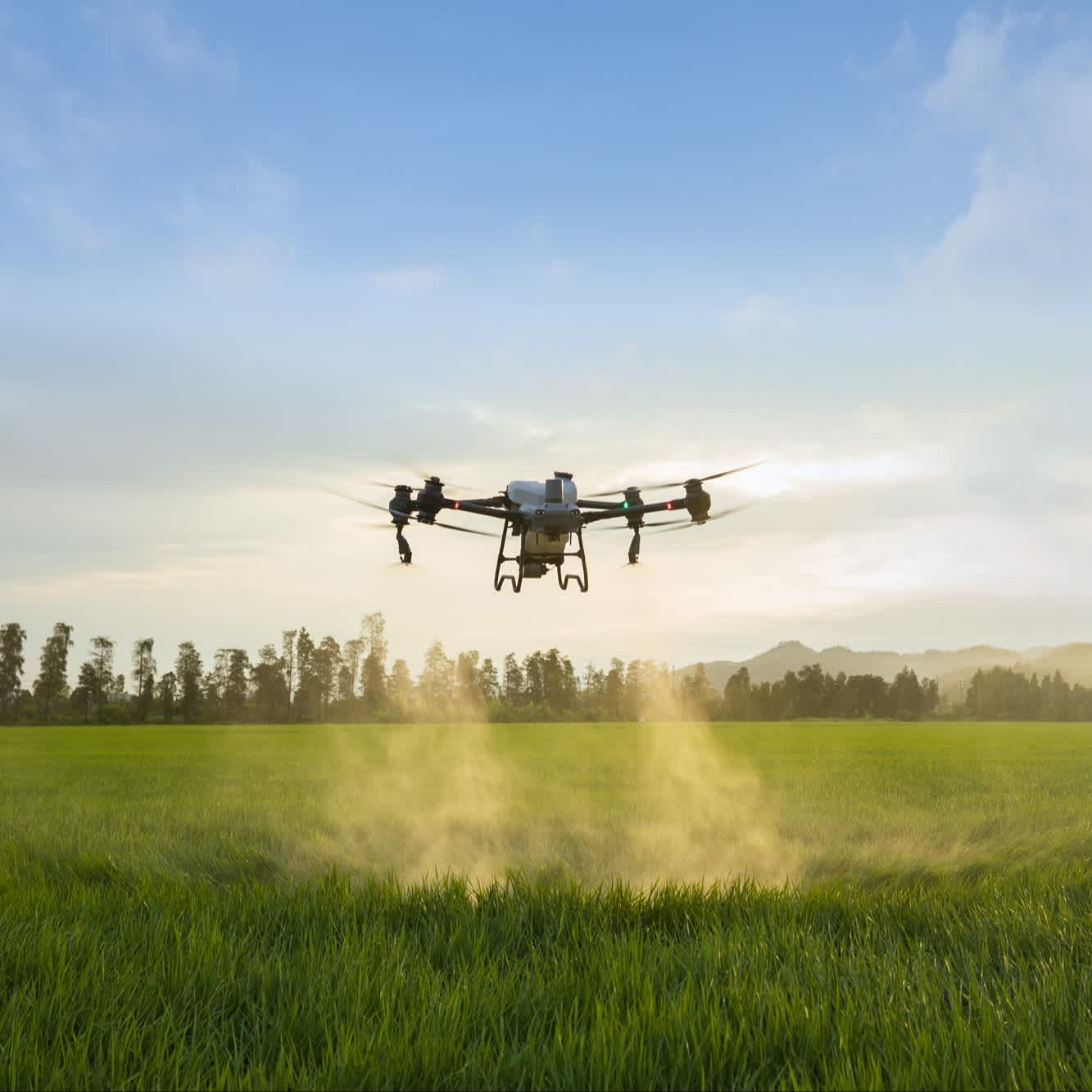
Course Delivery
Train in an agricultural setting
The course is delivered on location at Drone Ag’s agricultural premises in Northumberland, providing the perfect backdrop for application-specific learning.
The GVC part of the course is delivered by heliguy™, while the DJI Agras training will be delivered by agricultural specialists Drone Ag, who have vast experience with the platform
Following course completion, candidates require a UK SORA-based Operational Authorisation to conduct spraying/spreading and/or to operate the larger Agras drones. heliguy™ has a consultancy service to help prepare submissions. As of April 2025, UK SORA replaced OSC methodology.
Spreading regulated substances for agriculture will also require HSE approval.
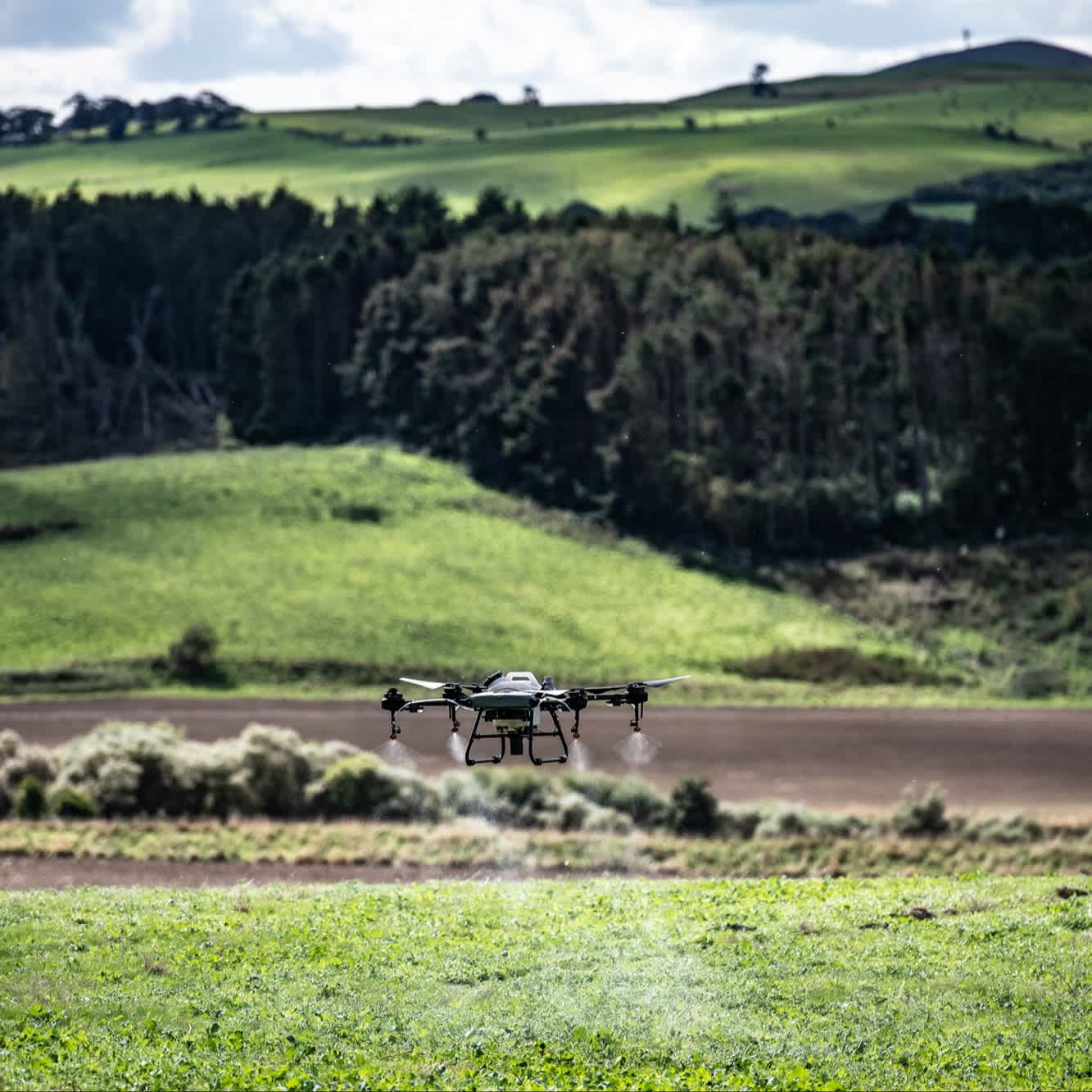
DJI Agras Applications
Efficient spraying and spreading
Precision Agriculture: DJI Agras can be deployed for efficient, cost-effective and precision aerial spraying/spreading, helping to boost agricultural productivity. It can apply fertilisers, seeds, and feed, and enables variable spreading to reduce fertiliser use while increasing yield.
Landscaping: DJI Agras can be an effective tool for landscaping, spraying water to help maintain lawns, gardens, and other landscapes, such as golf courses.
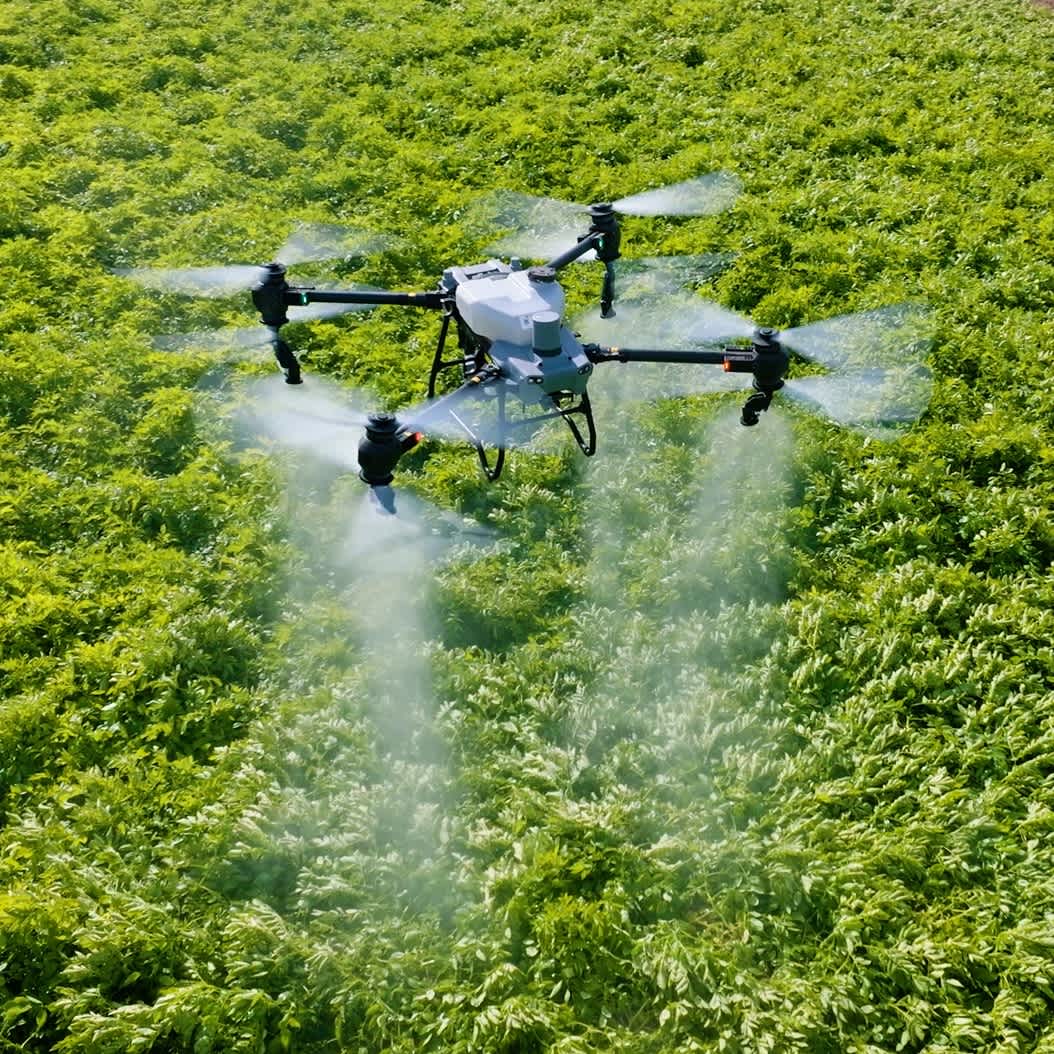
Accreditation
![UK CAA Recognised Assessment Entity (RAE)]()
UK CAA Recognised Assessment Entity (RAE)
Authorised GVC/A2 CofC Training Courses
![UK CAA Permission for BVLOS Flights: Operational Authorisation UAS 15435]()
UK CAA Permission for BVLOS Flights: Operational Authorisation UAS 15435
Helping companies unlock BVLOS missions in an AAE with DJI Docks
![The UK's only DJI Gold and S-Level Partner]()
The UK's only DJI Gold and S-Level Partner
Trusted supply on DJI products
![ISO 9001 Certification]()
ISO 9001 Certification
Driving industry standards through robust operational protocols for enhanced safety and reliability
![Training Qualifications UK]()
Training Qualifications UK
Accredited training courses endorsed by TQUK.
![Ofqual-regulated Training]()
Ofqual-regulated Training
Recognised quality mark for meeting accreditation criteria.
![Cyber Essentials]()
Cyber Essentials
Verified data security
![Financial Conduct Authority]()
Financial Conduct Authority
Authorised to conduct regulated financial services
![Armed Forces Covenant Defence Employer Recognition Scheme - Silver Award]()
Armed Forces Covenant Defence Employer Recognition Scheme - Silver Award
Proud supporter of our Armed Forces
![D-U-N-S Registered: 77-916-1210]()
D-U-N-S Registered: 77-916-1210
Verified to conduct international business
